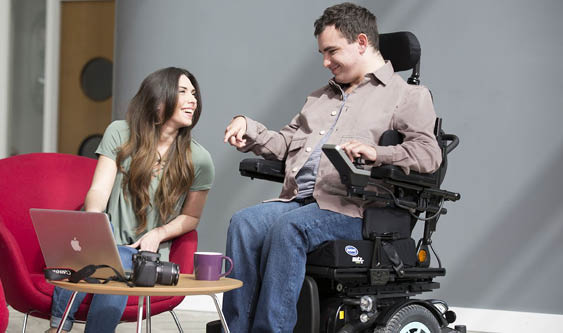It’s no question that power wheelchairs are highly complex and technical pieces of equipment designed with a vast array of programming possibilities to help ensure that we, as therapists, keep our clients as active and independent as possible. Programming, if done correctly, could mean the difference between an individual driving a powerchair safely and independently - possibly for the first time in their life or, if incorrectly done, it could be the reason someone is denied provision of this potentially life changing piece of equipment. There’s a lot at stake. Therefore, it’s understandable why some therapists may shy away from programming, in fear of getting it wrong. This session looks at basic powerchair programming and technical developments within the industry that are revolutionising the way therapists should perceive programming.
![]()
Objectives
After discussing the assessment process in relation to power chair provision, participants will be able to devise driving profiles specific to their client’s needs. They will leave with an understanding of what drive parameters are and be able to list at least 3 specific drive parameters which influence the drive of the chair. Participants will also obtain an understanding of what proportional specific driving parameters are and be able to list at least 3 proportional specific driving parameters which influence the handling/control of the chair. In addition, this presentation will provide attendees with an understanding of technological develops available on the market in relation to programming.
References
1. Dicianno BE, Cooper RA (2010) Joystick control for powered mobility: Current state of technology and future directions. Phys Med Rehabil Clin N Am. 2010 February; 21(1): 79–86.
2. Mortenson WB, Miller WC, Boily J, Steele B, Crawford EM, Desharnais G (2005) Perceptions of power mobility use and safety within residential facilities. Can J Occup Ther. 2005 June; 72(3): 142–152.
3. Nilsson, L., Eklund, M., Nyberg, P., & Thulesius, H. (2011). Driving to learn in a poweredwheelchair: The process of learning joystick use in people with profound cognitive disabilities. American Journal of Occupational Therapy, 65, 652–660.
4. Wang, R. H., Holliday, P. J., & Fernie, G. R. (2009). Power mobility for a nursing home resident with dementia. American Journal of Occupational Therapy, 63, 765–771.





